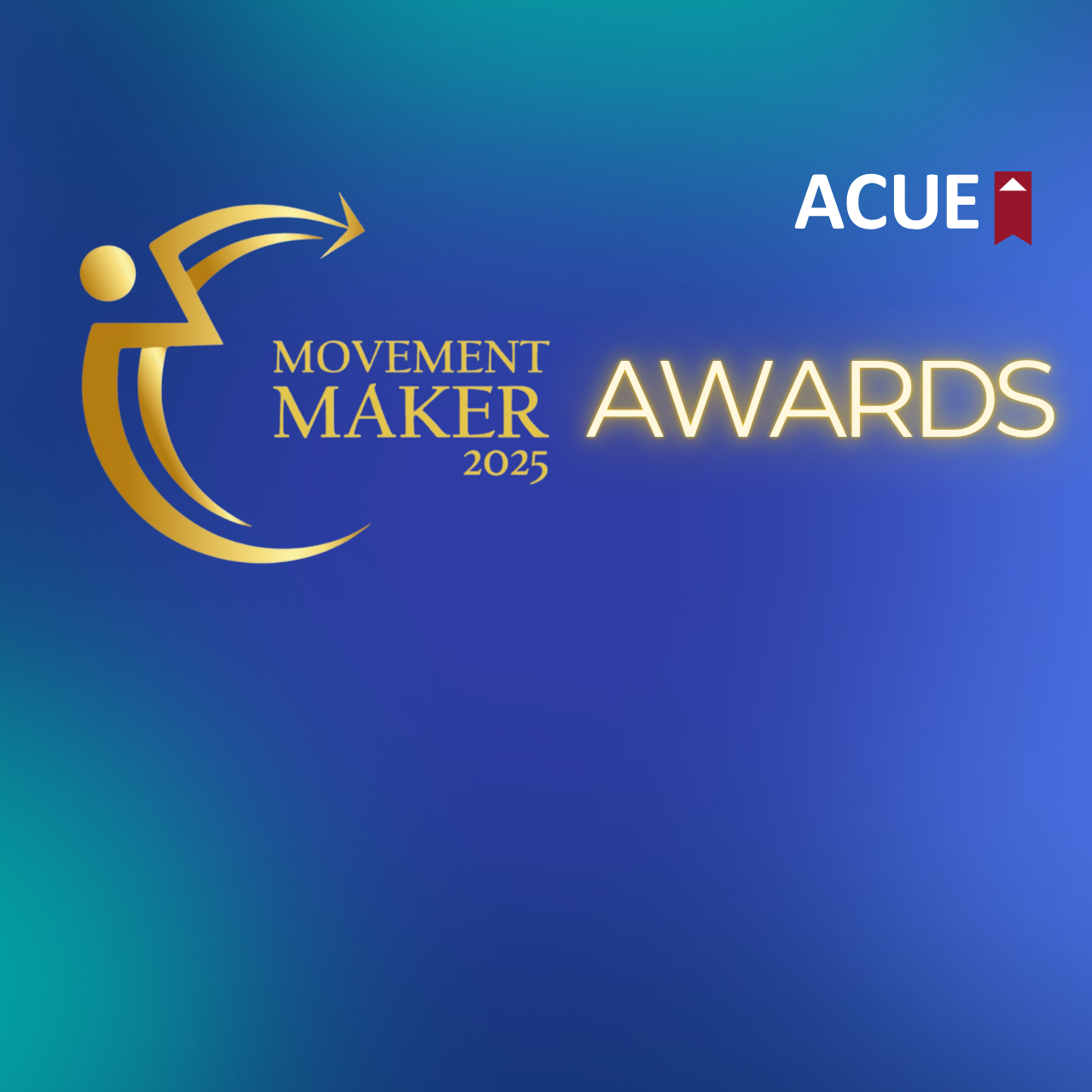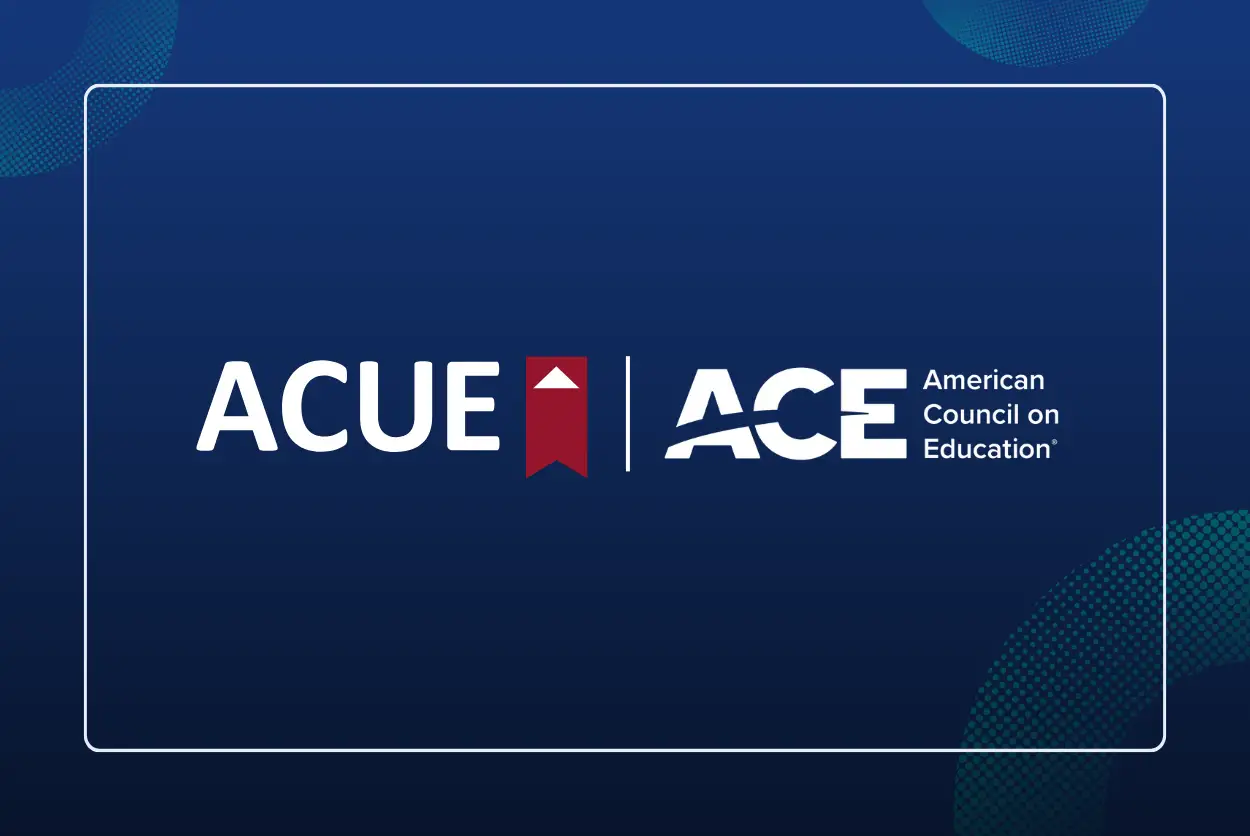In the early days of December 2022, late one night, under the cover of darkness, I eagerly typed “ChatGPT” into my Google search bar. I nervously and excitedly entered the world of AI, similar to when I walked into a candy store as a child and was bombarded with colors, flavors, and treats to pique my curiosity. However, just like the choices I would make in a candy shop, jumping into the realm of AI required thoughtful consideration.
Whether you’re enthusiastic, wary, or, as Dr. Flower Darby puts it, an AI realist, as faculty, it’s crucial to navigate AI in education with mindfulness. AI can undoubtedly enhance efficiency and accuracy, yet it lacks the essence of human intelligence and personal interaction. As we explore the integration of AI into our teaching, we must ask ourselves pivotal questions and consider strategies that align with human-centered pedagogy.
1. Set Clear Learning Objectives for AI Assignments

What strategies can you employ to communicate the learning objectives of AI assignments effectively, fostering a shared understanding among students and promoting engagement?
In the dynamic landscape of AI and education, a foundational step is to set crystal-clear learning objectives. Begin by delineating explicit learning outcomes and objectives for your AI assignments. What specific knowledge and skills do you want your students to acquire? The answer lies in the details of these objectives. This transparency provides a road map for students.
In a creative writing class, the learning objective is to introduce students to the possibilities of AI in enhancing storytelling. The clear objective is for students to explore and understand how AI tools can be used as creative partners in the storytelling process. The assignment involves creating a short story where students use AI-generated prompts or characters to add unique elements to their narratives. By setting this clear learning objective, you can guide students to appreciate the synergy between human creativity and AI assistance in storytelling.
Have students collaborate to define the learning objectives collectively; this will not only deepen their understanding but also build connections that mirror real-world collaboration.
2. Choose the Right AI Tool for the Job

How can you thoughtfully integrate a diverse array of AI tools into your curriculum, providing students with the tools needed to innovate, deepen their understanding of content, and generate new ideas?
The integration of AI tools into the educational landscape demands strategic decision-making. It’s not just about incorporating technology for the sake of it; it’s about selecting the right tool for the right purpose. As educators, our choices should align with the overarching goal of empowering students to innovate, comprehend content deeply, and spark creative ideas. When contemplating the integration of AI tools, consider the assignment’s complexity and purpose. For example, is the goal to enhance storytelling, generate visual art, or optimize code creation? Depending on the desired learning outcomes, select tools that resonate with the learning objectives. This thoughtful approach ensures that AI becomes a dynamic, purposeful component of the learning experience.
Introduce Adobe Firefly, an AI image-generation model, into a literature or art class. The objective is not only to showcase the capabilities of the tool but to explore creativity in visual storytelling. Students could use DALL-E to bring to life characters from literature or generate unique visual interpretations of a given theme. By aligning the tool with the curriculum’s learning outcomes, students not only engage with AI but also deepen their understanding of literature and art through a fresh lens.
To infuse authenticity into the AI learning experience, connect the concepts to real-world challenges. Foster a sense of purpose beyond the classroom by encouraging students to explore how the chosen AI tool can address broader societal issues. For instance, prompt discussions on how AI-generated art can be used to communicate complex ideas or evoke emotions on topics such as social justice or environmental sustainability. By grounding AI exploration in real-world relevance, students are not only learning about technology but are also contributing to meaningful conversations and solutions.
3. Encourage Experimentation and Play
How can you foster curiosity and ignite a spirit of innovation in AI assignments, turning the learning process into an exploration of creativity and play?
The landscape of AI offers a playground of possibilities, and as educators, our challenge is to turn assignments into avenues for experimentation and discovery. We can empower students to delve into the world of AI, sparking curiosity and encouraging a playful approach to learning. To achieve this, provide students with opportunities to explore and experiment with AI tools. This not only nurtures a sense of play but also opens doors to unexpected discoveries and innovative thinking. By allowing room for experimentation, we enable students to tap into their creativity and uncover unique applications of AI that extend beyond initial expectations.
Rather than confining students to a rigid assignment, encourage them to play with the tools, experimenting with language, genres, and prompts. The goal is not just to complete a task but to explore the nuances of AI in crafting narratives. This playfulness can spark creativity and a sense of ownership over their work.
To partner with students in their AI learning journey, guide them intentionally in using AI tools with creativity. Encourage thoughtful exploration rather than aimless experimentation. By providing guidance and framing the exploration within a learning context, you can ensure that students purposefully engage with AI. This partnership transforms the learning process into a collaborative venture, where both educators and students contribute to the discovery and application of AI in innovative ways.
4. Acknowledge and Teach Voice, Representation, Access, and Data Privacy

How can you cultivate a culture of ethical and responsible use of AI in your assignments, ensuring that students not only understand the technology but also its profound implications on voice, representation, access, and data privacy?
In the age of AI, understanding the ethical considerations surrounding its use is not just a prerequisite, it’s an imperative responsibility. As educators, our role goes beyond teaching the technical aspects of AI; we must instill in our students a deep awareness of the societal impact their creations may have. This best practice involves providing comprehensive background information on AI concepts while placing a strong emphasis on ethical considerations, including issues related to bias, privacy, and algorithmic fairness. To ensure the ethical and responsible use of AI, begin by offering a thorough understanding of its concepts. Place a spotlight on the ethical dimensions, discussing the potential biases that may emerge from data, the importance of privacy in AI-driven applications, and the broader implications of algorithmic decision-making on society.
Take, for instance, a class discussion that focuses on the impact of biased data on AI algorithms and its implications for society. By examining real-world cases where biased algorithms have perpetuated inequalities, students gain insight into the profound consequences of seemingly neutral technologies. This example serves as a gateway to exploring the ethical dimensions of AI in a tangible and relatable context.
To foster ethical use, extend the educational focus beyond the technical aspects. Cultivate digital citizenship skills by educating students on the broader societal impact of AI. Encourage critical thinking by prompting discussions on the ethical implications of AI technologies, emphasizing the importance of responsible decision-making.
5. Infuse Collaboration and Critical Thinking

What strategies can you employ to communicate the learning objectives of AI assignments effectively, fostering a shared understanding among students and promoting engagement?
Beyond technical proficiency, we should craft assignments that stimulate critical thinking, encourage collaboration, and inspire the generation of new ideas. Start by creating assignments that prompt students to evaluate the strengths and limitations of AI approaches, fostering a deeper understanding of the technology. This goes beyond surface-level comprehension, challenging students to engage in thoughtful analysis and consider the broader implications of their work.
Consider a scenario where students collaborate on a project to develop an AI-driven solution for a community issue. This could involve analyzing datasets related to local challenges, discussing ethical considerations, and collectively designing an application that addresses a real-world problem. This hands-on, collaborative approach not only sharpens technical skills but also encourages critical thinking and fosters a sense of collaboration.
Emphasize deep learning principles and the building of relationships among students. Provide opportunities for students to engage with information, synthesize it, and think critically about it, creating dynamic and enriching learning experiences. By fostering autonomy and creativity, educators empower students to generate their own ideas and content, transforming them from passive learners to active contributors in the learning process.
6. Personalized and Differentiated Learning

In what ways can you create AI assignments that accommodate various learning styles, ensuring an inclusive and engaging experience for all students?
One of the powers of AI lies in its ability to adapt and differentiate content for students. Begin by recognizing the unique strengths and challenges present among students. Tailor AI assignments to accommodate this spectrum, providing resources and support that cater to both novices and those with advanced skills and knowledge. This approach ensures that every student can actively engage with the material and learning experiences.
Consider an AI assignment where students are given the freedom to choose different formats for their work. This might include options such as written reports, presentations, or creative projects. By allowing this flexibility, students can align the assignment with their strengths and preferences. Beginners might find comfort in written reports, while those with advanced skills can showcase their proficiency through more complex creative projects. This adaptable framework not only accommodates diverse skill levels but also nurtures a sense of ownership over the learning process.
Go beyond adaptation and embrace co-creation. Encourage students to be active co-creators of their educational experience, providing opportunities for them to shape the direction of their learning. By promoting autonomy and creativity, educators enable students to take ownership of their education, transforming the classroom into a collaborative space.
7. Integrate with the Existing Curriculum . . . and Start Small

How might you identify the low-hanging fruit within your curriculum, pinpointing areas where AI integration can be introduced gradually and effectively?
Embarking on the integration of AI into the curriculum is a transformative journey that necessitates a thoughtful and gradual approach. The key is to start small, with one assignment, one idea, in one course, during one semester. This deliberate approach allows you to gauge impact, fine-tune strategies, and gradually expand the integration of AI into your teaching repertoire. Begin by exploring ways to align AI assignments with course topics and learning objectives.
In a literature course, start small by introducing a single AI assignment focused on creative writing. Students could use AI-generated prompts or tools to explore new narrative styles or even co-create stories with AI assistance. This limited yet impactful integration not only emphasizes storytelling but also serves as a gateway for students to witness the potential of AI in a familiar writing context.
Consider incorporating a feedback loop within the “start small” approach. Create channels for open communication with students, gathering their insights and experiences as they engage with the AI assignment. This feedback loop not only provides valuable information for fine-tuning future implementations but also fosters a collaborative and supportive learning environment.
8. Balance Theory and Practical Application

In what ways can assignments be designed to encourage students to analyze the strengths and limitations of AI approaches critically, fostering a comprehensive understanding that goes beyond theoretical knowledge?
The integration of theoretical knowledge and practical application is the cornerstone of preparing students for the dynamic opportunities that lie ahead. To achieve this balance, we need to go beyond traditional teaching methods, designing assignments that prompt critical thinking and foster a deep understanding of AI principles through hands-on experiences. Begin by weaving theoretical knowledge into hands-on applications, creating assignments that serve as bridges between abstract concepts and real-world scenarios. This dynamic approach not only enhances students’ theoretical understanding but also equips them with the skills needed to apply this knowledge in practical settings.
Incorporating Socratic Seminars into the curriculum, creating a space for deep learning and critical thinking about the ethical aspects of AI. This method encourages students to engage in thoughtful discussion, challenging each other’s perspectives and promoting a deeper understanding of the ethical considerations surrounding AI. By integrating this theoretical exploration with practical discussions, students not only grasp theoretical concepts but also develop the analytical skills needed to navigate the ethical dimensions of technology.
To enhance the human aspect within the AI learning experience, emphasize deep learning principles and the building of relationships among students. Foster collaborative and enriching learning experiences by incorporating group activities or discussions that prompt students to engage with AI from diverse perspectives. By creating a collaborative atmosphere, we reinforce theoretical principles and nurture a sense of community and shared exploration among students, enriching their learning journey.
9. Connect to Future Careers and Professional Opportunities

How might AI assignments be framed to encourage students to envision the real-world applications of their skills, fostering a sense of purpose and relevance beyond the classroom?
The integration of AI into education goes beyond the classroom; it’s about preparing students for the challenges and opportunities they’ll encounter in their future careers. To achieve this, connect AI assignments to relevant course topics, learning objectives, and the broader landscape of industry applications. Begin by guiding students to leverage digital technologies in addressing genuine problems, mirroring the challenges they are likely to face in their future professional experiences. Emphasize that AI tools extend beyond the classroom, showcasing their utility in tackling real-world issues. Frame assignments around authentic problems to enhance engagement and practicality, demonstrating the immediate applicability of AI concepts.
Consider designing an assignment that requires students to apply AI in addressing a current industry challenge, such as optimizing supply chain processes using predictive analytics. By connecting AI concepts to real-world applications, students not only gain practical experience but also understand the transferability of these skills to their future careers.
Provide opportunities for students to share their career goals and expectations, fostering a sense of individuality. This allows us to tailor assignments to students’ unique career paths and create a supportive environment that values and respects each student’s professional goals.
10. Emphasize Human-AI Interaction
How can you guide students to view AI tools not as replacements for critical thinking and independent research but as creative partners, fostering collaborative learning and interdisciplinary perspectives in the process?
The integration of AI into education is an opportunity to emphasize the symbiotic relationship between humans and AI. Rather than relegating AI as a tool or resource, guide students to perceive AI as a creative partner, augmenting their capabilities and inspiring collaborative problem-solving. Encourage students to recognize that AI is not a substitute for critical thinking but a catalyst for it. Design assignments that create moments for collaboration. This approach enhances students’ ability to approach problems from different angles and mirrors the collaborative dynamics they are likely to encounter in professional settings.
Picture a marketing class in which the focus is on emphasizing the collaborative relationship between students and AI in crafting effective marketing campaigns. The objective is for students to leverage AI tools to enhance their marketing strategies rather than relying on them exclusively. Have students create a marketing campaign using AI-generated insights to refine their target audience, messaging, and content strategy. By framing the learning objective in this way, we can guide students to see AI as a valuable partner in the marketing process, amplifying their strategic thinking.
Facilitate open dialogue that explores students’ perceptions and concerns regarding the collaboration between humans and AI. Acknowledge the emotional and ethical dimensions of working with AI and create a space for students to express their thoughts. By incorporating their perspectives, we can co-create an environment that recognizes and respects the human side of the AI-human connection.
In conclusion, the potential of AI in education is vast, and as faculty, our responsibility is paramount in guiding students through this transformative journey. By aligning AI assignments with human-centered pedagogy, we not only prepare students for an AI-infused world but also enrich their skills in communication, collaboration, critical thinking, and reflection. As we explore these strategies, let’s remain innovative, brave, and humble, recognizing that the integration of AI allows us to be more human, more connected, and more creative in our teaching practices. The key lies in continual exploration, fostering curiosity, and embracing the symbiotic relationship between humans and AI to create a future of possibilities we can only imagine.









